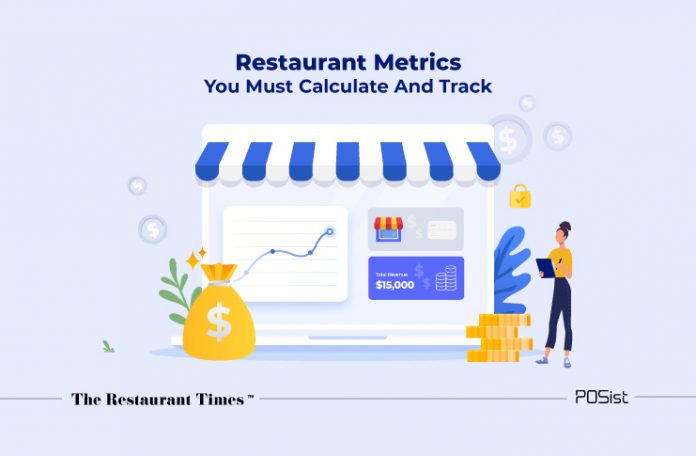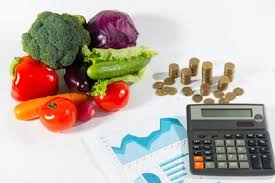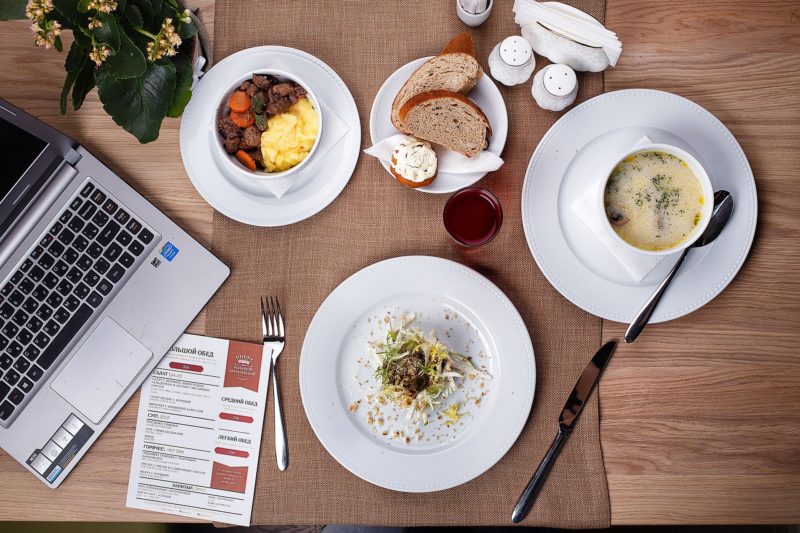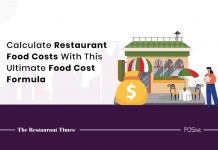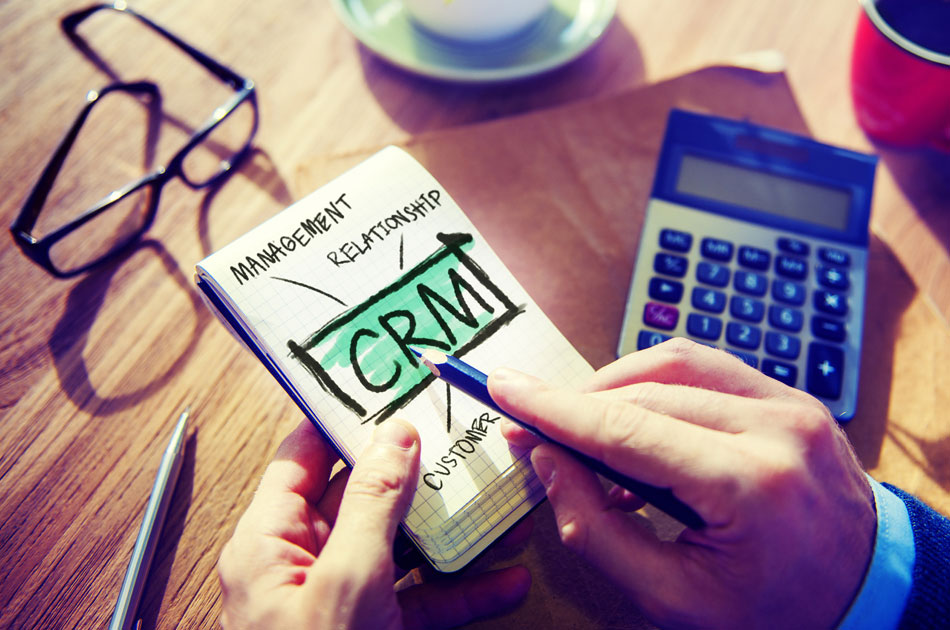In the overtly competitive restaurant space, making a restaurant successful requires a lot of planning and hard work. For a restaurant business to run profitably, several restaurant metrics must be calculated periodically. By calculating them, restaurateurs in Saudi Arabia can understand their restaurant’s performance better and determine the crucial areas that require any improvements. Several costs add up and ultimately affect the net profit of a restaurant business. One cannot make a single change and expect to see a significant difference in the overall costs. That is why it is essential to keep track of all the restaurant metrics. This article covers 13 vital restaurant metrics that restaurant operators in Saudi Arabia must calculate and track.
13 Essential Restaurant Metrics And How To Calculate Them
Restaurant metrics provide a holistic perspective on how to measure the health of your restaurant business. By calculating the finances of the restaurant regularly, operators can ensure that their business is performing well.
Here is a list of restaurant metrics that every restaurant business in Saudi Arabia must calculate.
1. Cost of Goods Sold (CoGS)
Cost of Goods Sold or CoGS is the cost incurred to prepare each item on your restaurant’s menu. It is one of the most important financial metrics every restaurant owner should keep track of. It represents the total amount you need to acquire the raw material required for preparing dishes over a given period of time. CoGS helps in determining if the menu items are priced appropriately or if the food cost is high. Calculating this metric helps assess and compare the Cost of Goods Sold according to the restaurant industry average.
Formula to calculate the Cost of Goods Sold :
CoGS = (Beginning inventory) + (Purchases) – (Ending inventory)
2. Labor Cost Percentage
The Labor Cost Percentage is the amount (in percentage terms) your restaurant spends on restaurant labor. Labor is usually the second-highest restaurant overhead after the food costs and constitutes 30-35% of total revenue, on average, in the foodservice industry. To yield more profits, the labor cost percentage should be low.
Formula to calculate the Labor Cost Percentage :
Labor Cost Percentage = Labor / sales
3. Prime Cost
Prime Cost is the total sum of the cost of goods sold(CoGS) and labor costs. It represents the restaurant’s highest expenses, and affects the entire restaurant operations, including how you set goals for your restaurant, price the menu, and create your budget.
Formula to calculate the Prime Cost:
Prime Cost = CoGS + Total labor cost
4. Break-even Point
Break-even point is considered one of the most essential restaurant metrics that must be calculated and tracked. It is a crucial figure that refers to the amount of revenue required to cover the total fixed and variable expenses incurred within a stipulated time period.
Formula to calculate the Break-even Point :
Break-even Point = Total fixed cost / [(Total Cost – Total Variable Cost) / Total Sales]
5. Food Cost Percentage
Food cost percentage is the difference between the cost of preparing a particular food item on the menu and it’s selling price. This restaurant metric must be tracked and analyzed periodically to understand whether a specific food item is profitable for your restaurant business.
Formula to calculate the Food Cost Percentage:
Food Cost Percentage = Item Cost / Selling Price
6. Gross Profit
Gross Profit is the profit your restaurant business makes after subtracting the cost of the goods sold from the revenue earned. It also indicates the remaining amount you are left with to pay for expenses such as rent, electricity, etc.
Formula to calculate the Gross Profit:
Gross Profit = Total Revenue – CoGS
7. Inventory Turnover Ratio
The Inventory turnover ratio refers to the total number of times your restaurant has sold out the entire inventory during a given period of time. This figure prevents restaurants from overstocking or understocking inventory and also helps in keeping a tab on how often your kitchen utilizes the entire inventory.
Formula to calculate the Inventory Turnover Ratio :
Inventory Turnover Ratio = [CoGS / (Beginning inventory + Ending inventory) / 2]
8. Net Profit Margin
Net Profit Margin represents the amount your business makes after accounting for operating expenses such as CoGS, rent, labor, electricity, etc.
Formula to calculate the Net Profit Margin:
Net Profit Margin = (Gross Sales – Operating Expenses) / Gross Sales
9. Average Cover/ Restaurant Revenue Per Seat
It represents the amount a single customer spends at your restaurant. This figure indicates how efficient your restaurant staff is at maximizing sales. You can also refer to this restaurant metric to forecast sales.
Formula To Calculate your restaurant’s Average Cover:
Average Cover = Total Sales / Number of Covers
10. Table Turnover Rate
Table turnover rate is the number of tables served during a given period of time. A quick table turnover rate indicates more profits. Calculating this metric would help you organize your kitchen operations better and provide you with more information related to table occupancy at various times of the day.
Formula to calculate the Table Turnover Rate:
Table Turnover Rate = Number of guests served during a time period / Number of seats.
11. Employee Turnover Rate
Employee Turnover Rate refers to the frequency at which employees leave the restaurant, over a period of time. Employee Turnover Rate includes resignations, dismissals, or retirements. However, it does not include internal moves such as promotions. A high turnover rate means that there are underlying issues with the workplace that are negatively affecting employee satisfaction.
Formula to calculate restaurant’s Employee Turnover Rate:
Employee Turnover Rate = (Employees Departed / Number of Employees) X 100
12. Customer Acquisition Cost
This is a marketing metric that shows how much it costs to get a new customer to your restaurant. This metric helps determine whether your restaurant marketing strategies are effective or not. By comparing various customer acquisition costs, marketers can prioritize the approach that gives them the maximum return on investment. Therefore, calculating customer acquisition cost is a must
Formula to calculate your Customer Acquisition Cost –
Customer Acquisition Cost = Marketing Expenses / Total New Customers Acquired
13. Customer Retention Rate
This metric depicts the number of customers your restaurant business retains. Repeat business from loyal customers and a higher customer retention rate increase the overall profitability of a restaurant.
Formula to calculate the Customer Retention Rate:
Customer Retention Rate = [ ( Total Customers – Total New Customers) / Total Customers] X 100
The list of essential restaurant metrics covered in this article will help in making the calculations easy and assist you in running your business better. Track these metrics regularly, gain better insights into your restaurant’s performance, and increase your restaurant’s customer base in Saudi Arabia!


